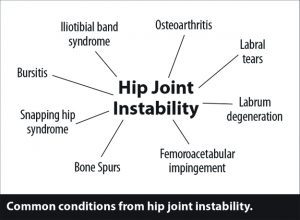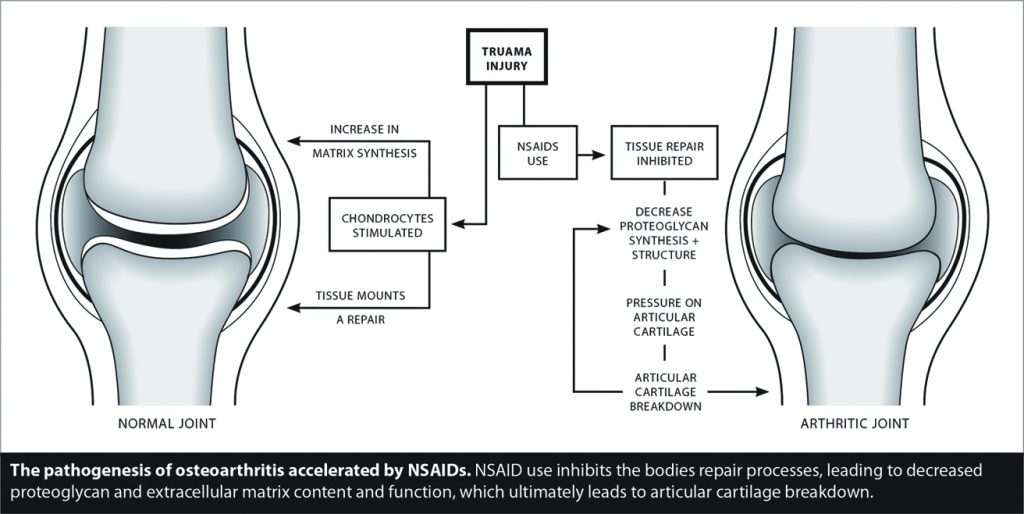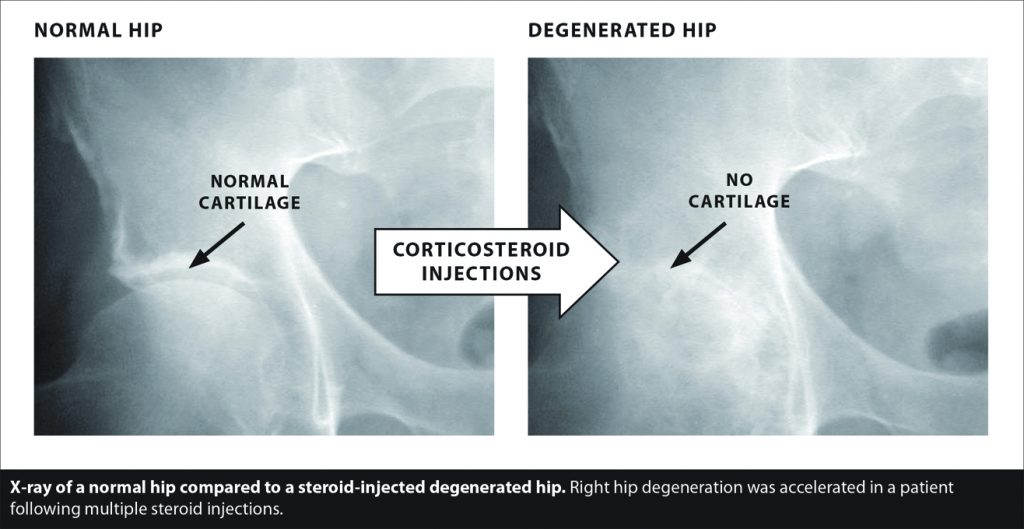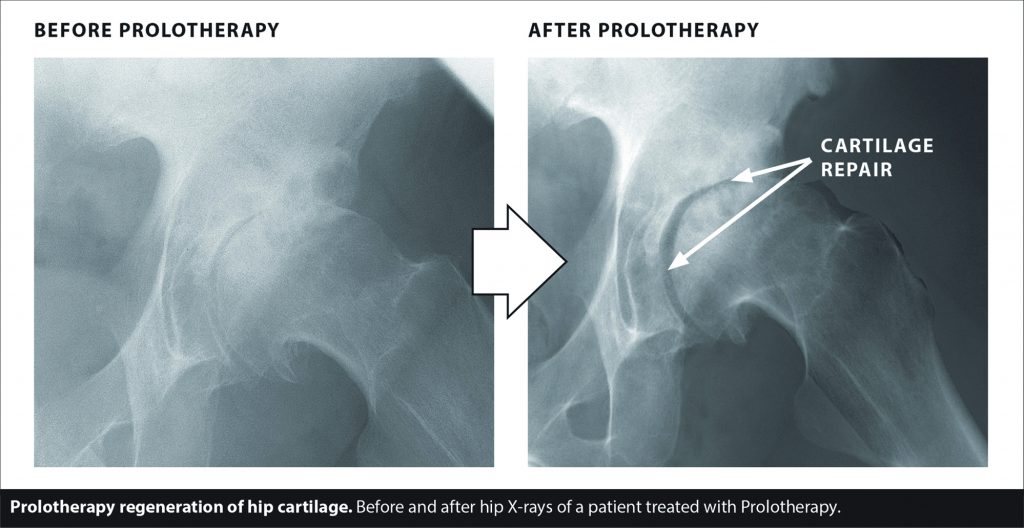By Debra K. Brinker, RN
Hip osteoarthritis is the most common cause of chronic hip pain and disability, and frequently results in hip replacement. Osteoarthritis of the hip occurs through a sequence of events that has at its core, a loss of joint cartilage. This affects other hip joint structures, and will eventually lead to joint space narrowing and bony overgrowth, progressing until movement of the hip joint becomes noticeably restricted.

What occurs before cartilage loss?
Hip osteoarthritis almost always begins with ligament weakness or injury. The hip joint is a ball-and-socket joint with massive ligaments. Healthy ligaments hold the bones together, and along with the cartilage enable the bones to glide evenly over one another when the joints are in motion. The ligaments are collagenous fibrous structures that are primarily responsible for maintaining smooth joint motion, restraining excessive joint displacement and providing stability across the joint. When the ligaments and other soft tissue structures of the hip are subjected to forces beyond their normal range, injury and hip instability result. Hip instability can lead to a number of common, painful hip conditions. (See figure 1.) The instability can progress to degeneration of the labrum, a ring of cartilage that surrounds the acetabulum, and eventually to hip osteoarthritis.
Are Cortisone injections and NSAIDs good treatment options?
NSAIDs (non-steroidal anti-inflammatory drugs) and corticosteroid injections are commonly used to treat acute and chronic pain and have been shown to be effective in decreasing inflammation and pain short-term. Unfortunately, these medications inhibit the histological, biochemical, and biomechanical properties of soft tissue repair. For this reason, their use is cautioned in those who have ligament and soft tissue injuries. (See figure 2.)

Cortisone actually weakens collagen and as such weakens soft tissue, contributing to the development of degenerative conditions such as osteoarthritis, which as we know, can lead to an eventual joint replacement. For acute ligament injuries these modalities should be used for the shortest period of time, if used at all. Instead, regenerative medicine techniques, such as Prolotherapy, which have been shown to resolve ligament injuries, repair labral injuries, and rebuild cartilage in the hip, provide an ideal option for pain relief and joint stabilization.
Is arthroscopy beneficial?
Arthroscopic cutting, shaving or removal of tissue is a direct assault to the hip joint, and increases the arthritic process in the long term. Arthroscopy, like the aforementioned treatments, may relieve symptoms temporarily, but long-term will destabilize the joint and boost degeneration.
The hip pain patient must realize that with each procedure and each shaving or cutting of tissue, NSAID prescription, or corticosteroid injection, the risk of developing long-term arthritis and the eventual hip replacement is greatly increased. (See figure 3.)

The key to keeping the hip strong is to stimulate the area to heal.
The goal of many other therapeutic, non-surgical modalities such as weight loss, exercise, physiotherapy, bracing, and orthoses, is to decrease pain and improve function. But these options are unable to repair the source of the pain, which is joint instability. The increased mechanical stress caused by injury to the ligaments, tendons, labrum, etc. alters joint function making the joint unstable and more susceptible to further soft tissue injury. The long-lasting effect of continual joint instability is osteoarthritis. (See figure 4.) The road to osteoarthritis, and the ensuing joint replacement, can only be remedied when the problem of joint instability is addressed.

Regenerative options: Prolotherapy and Stem Cell Prolotherapy
Prolotherapy, also known as Regenerative injection therapy, stimulates, rather than interferes with, the normal healing process of the body. Prolotherapy stimulates the normal inflammatory-reparative mechanisms of the body, laying down new collagen, strengthening the tendons and ligaments, repairing the hip labrum, and boosting cartilage growth. (See figure 5.) -surgical regenerative therapies should be a first-line, conservative treatment option. Prolotherapy is also an effective modality after surgery, if continued pain is experienced or for arthritis that was accelerated due to the surgery. For more advanced conditions, Stem Cell Prolotherapy (Biocellular Prolotherapy) can be utilized in conjunction with Hackett-Hemwall Prolotherapy, offering a promising alternative to joint replacement and the opportunity for healing and return to function for those suffering from chronic hip pain.

Regenerative Medicine Specialists
CaringMedical.com
239-303-4546
with locations in Fort Myers and Chicagoland









